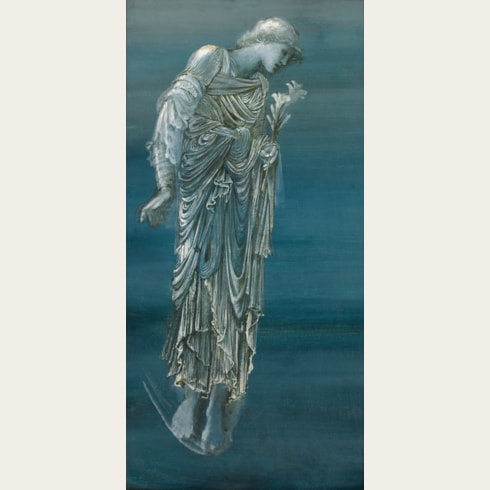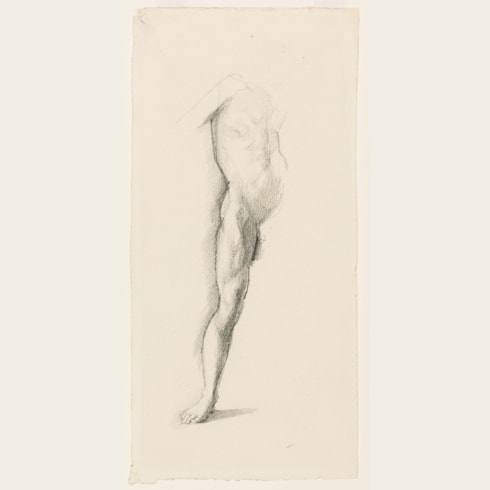Edward Coley BURNE-JONES
(Birmingham 1833 - London 1898)
The Head of a Young Woman
Signed and dated EBJ 1874 at the lower right.
288 x 212 mm. (11 1/4 x 8 3/8 in.)
ACQUIRED BY THE FUNDACION MAPFRE, MADRID.
Another author, writing shortly after the artist’s death, noted that ‘It is quite possible that had Burne-Jones been able to do things with greater ease we should have missed the careful reverence that is so characteristic of his drawings...Burne-Jones’s tender and beautiful visual power, though it may have suffered from incomplete expression, may, on the other hand, owe much to the very difficulties which, making him less readily satisfied, carried him to greater heights. It is to his powers of self-criticism that we owe the long series of his pencil studies, and it is not unlikely that posterity will come to set more value on them, especially some of the beautifully drawn heads of women, so expressive of his art’s intention, than upon his finished paintings, for in no other work of our time is there so much tenderness and delicacy of execution bearing such an intimate message.’
Drawn in 1874, the present sheet, which is both signed and dated, is likely to have been intended as an independent, finished drawing rather than a preparatory study for a painting. That Burne-Jones saw his drawings as autonomous works of art is seen in the fact that he often exhibited them independently of his paintings, and frequently gave them as gifts to friends.
A resemblance may be noted with Burne-Jones’s model and sometime mistress, Maria Zambaco, who appears in many of his paintings and drawings of the late 1860’s through the mid-1870’s. Many years later, in a letter written in 1893, the artist recalled of Zambaco that she had ‘a wonderful head, neither profile was like the other quite – and the full face was different again.’
The leading member of the second generation of Pre-Raphaelite painters, Edward Burne-Jones studied at Exeter College, Oxford, where he met William Morris. The two were to remain lifelong friends and colleagues, with Burne-Jones executing designs for stained glass windows, ceramic tiles and tapestries for Morris and Company for more than thirty-five years. Another close friend was Dante Gabriel Rossetti, who gave Burne-Jones some of the little artistic training he received, otherwise being largely self-taught. From early in his career Burne-Jones enjoyed a measure of success, particularly as a designer of stained glass panels. In 1859 he made the first of four trips to Italy, a country whose art he found of considerable inspiration throughout his life. In 1877 he showed a total of eight paintings at the inaugural exhibition at the Grosvenor Gallery, established as a more radical alternative to the Royal Academy. The success of these pictures, and his continued participation in the yearly Grosvenor exhibitions, established Burne-Jones's reputation as a leader of the Aesthetic movement. His fame also spread to Europe, and in particular Paris, where his painting of King Cophetua and the Beggar Maid was greatly admired at the Exposition Universelle of 1889.
A passionate and prolific draughtsman, Burne-Jones produced countless preparatory studies and cartoons for his paintings, as well as drawings intended as independent works of art in their own right, in black and red chalk, pencil, pen and watercolour. His drawings were, indeed, of arguably greater significance to him than his finished paintings; as John Christian has noted, Burne-Jones ‘was always a draughtsman first and a painter second.’ Similarly, the artist’s friend Graham Robertson wrote that ‘He was pre-eminently a draughtsman, and one of the greatest in the whole history of Art…as a master of line he was always unequalled; to draw was his natural mode of expression – line flowed from him almost without volition.’ Although he occasionally gave drawings away as presents, and also sometimes exhibited them in public, Burne-Jones seems to have kept most of his drawings in his studio until his death, after which they were dispersed.
Provenance
Literature










